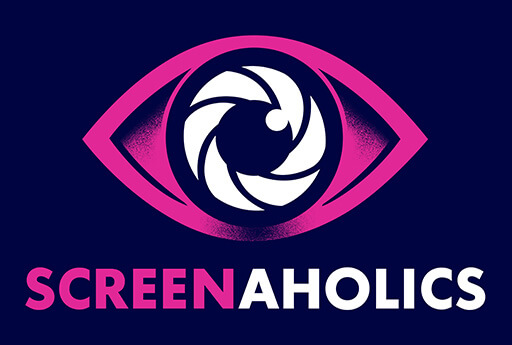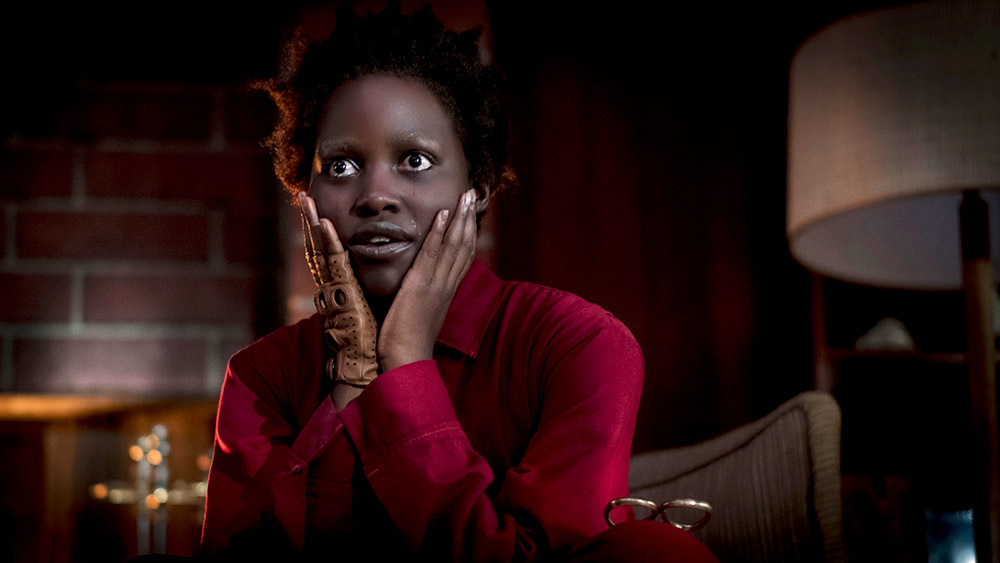Before the start of horror-genre film Us, a studio opening credit containing a hypnotic teacup animation that references Jordan Peele’s debut film Get Out (2017) is seen. This referral to previous work recognises Peele’s ability to deliver on iconography and is a testament to the driving power of Peele’s brand, which despite having only directed one film in his career has already garnered him accolades and recognition as an auteur horror director.
Us asks a lot from Peele. The pressure to create something identifiable, but different, and have it follow his highly regarded feature debut stacks the cards firmly against him. Despite these high expectations, Peele is successful in delivering a magnificently executed genre-film that speaks first as a horror film and secondarily as a statement piece.
While on holiday in Santa Cruz, the Wilson family, spearheaded by mother Adelaide (Lupita Nyong’o), father Gabe (Winston Duke) and their two children, experience a violent home invasion coordinated by doppelgangers known as The Tethered. Adorned head-to-toe in red and cradling baroque brass scissors that when used cut through the silence of a dark room as if it were a cloth, The Tethered hunt down each Wilson one-by-one, converging on multiple quick-cut scenes that shows the families wits being tested in order to survive.

Peele continues to effectively combine comedic elements – that speak to race and politics – with the horror genre, elevating the material to provide a deeper level of understanding of the current climate in 2019 while also being entertaining. Where Get Out focused on comedy to outline taboo, comedy in Us serves to highlight the family’s response to brutality, and ultimately, their growth to disassociate any emotion from the violent actions they execute to survive.
Make no mistake, the laughter beats are peppered throughout Us, though the film remains very much a horror which is brought out extraordinarily by a spine-tingling score that shrieks like a broken metal clothesline, and actors that work twice as hard to portray the Wilsons and their murderous doppelgangers. Lupita Nyong’o, whose eyes offer a window into her tormented soul, stunningly portrays a woman living with paranoia following a childhood trauma that remains a mystery for much of the film. Her serious demeanour is complemented by a-scene-stealing Winston Duke who plays an adorably daggy husband that just wants a relaxing vacation but finds his sincerity being troublesome when in danger.

The success of Us rides on the duality of the performances needing to fulfil the loving nature of the Wilsons and that of the chillingly-sinister behaviours of The Tethered. In the case of both performances, these are exceptionally done to a level of effectiveness that by the time all characters are together, you cannot help but play a game of maths counting how many of the Wilsons are in plain sight and how many of The Tethered are lurking about, hunting. Ultimately, the film is just as much about ‘us’, being the Wilsons, and ‘them’, being The Tethered.
Symbolism remains an essential ingredient in Peele’s horror soufflé, with the repeat viewing of the film offering a deeper level of understanding for movie-goers much in the realm of The Sixth Sense (1999) and Hereditary (2018). Where horror films can primarily focus on religious undertones (no doubt Us references these also), the use of rabbits as symbolism of free-will (you thought there were a lot of rabbits in The Favourite (2018)) and references to other horror films (nothing more meta than a son named Jason wearing a Jaws shirt) allow the audience to connect deeper with the material whilst honouring Peele’s horror influences.
Us is equally liberal in the symbolism department as it is in the thematic, however, those looking to enjoy the horror elements can still do so without the need of taking a film studies class. Much like the rabbits which burrow underground, Us offers plenty of digging to be had story-wise with the film being a reflection on the impact of nurture (alluding to impoverished neighbourhoods), gender and the negative manner which humans personify insecurity and doubt.

Though never explicitly calling out race, the experiences had between the Tylers (Elisabeth Moss and Tim Heidecker as a white family holidaying nearby) to those of the Wilsons differ significantly with the Tylers preoccupation with wealth and control being their biggest vice, contrasting with the family-oriented Wilsons. Police providing a lack of response to calls from the Wilsons serves as a beat to the story but also to the current hardships between African Americans and the police force. This is further reinforced in the inclusion of 90’s rap political anthems that dominate the scenes they feature in.
Peele’s masterful talent to deliver a full circle approach to filmmaking is exemplary in both comedic and narrative beats and will be sure to have studios knocking at his door asking to produce their next original horror blockbuster. While the similarities in style and structure when compared to his debut feature are easy to call out (and undoubtedly what many will unfairly base their opinions on), Us on its lonesome has all the trimmings of a great film that will influence the narrative of future horror films.
Fun Fact:
Jordan Peele gave the cast ten horror films to watch so they would have “a shared language” when filming: Dead Again (1991), The Shining (1980), The Babadook (2014), It Follows (2014), A Tale of Two Sisters (2003), The Birds (1963), Funny Games (1997), Martyrs (2008), Let the Right One In (2008), and The Sixth Sense (1999).




COMMENTS